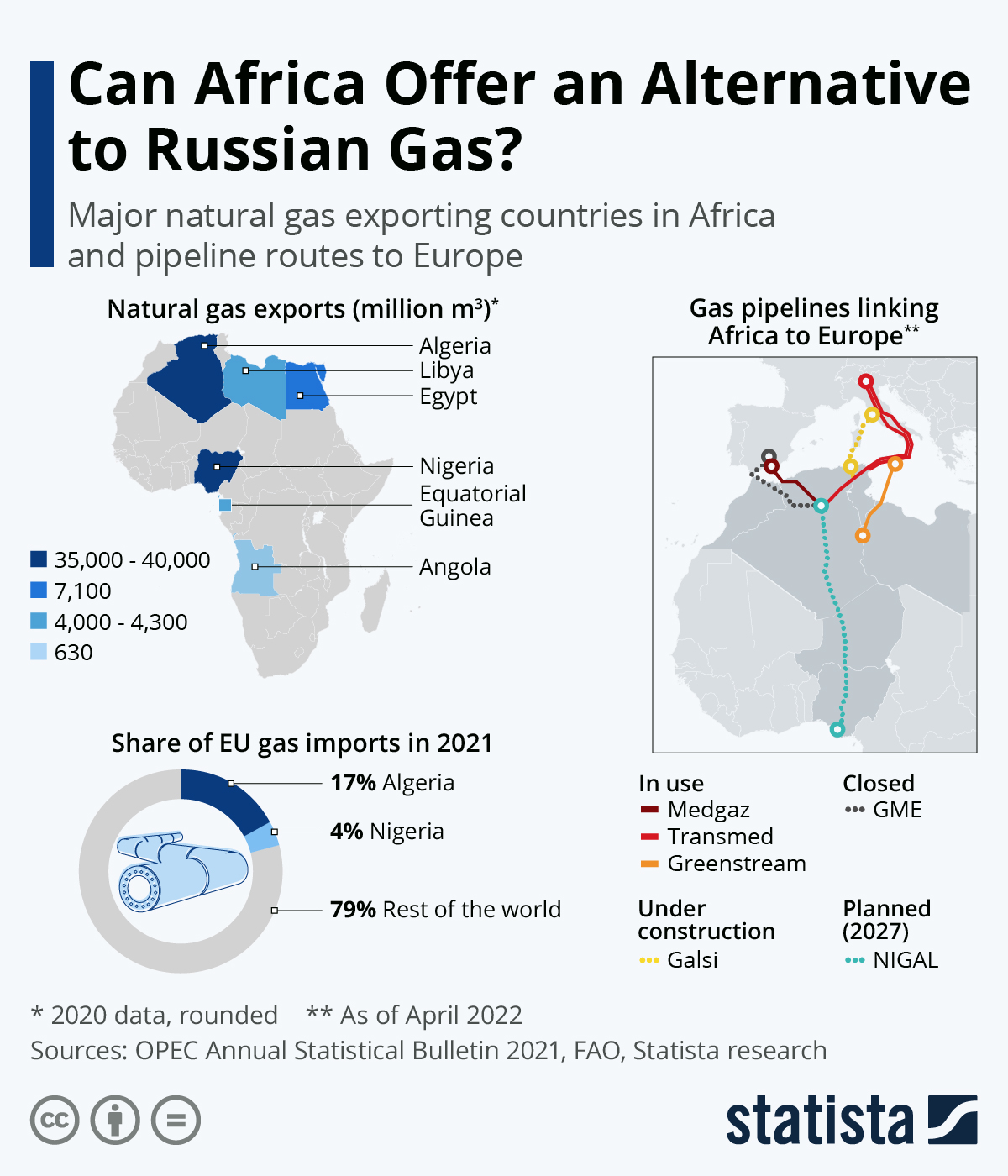Europe is turning to Africa for help with weaning them off their dependence on Russia’s natural gas supply, as the war in Ukraine continues to escalate. It’s a move supported by Akinwumi Adesina, the head of the African Development Bank, who said in March, "Europe is looking for alternative sources of gas supply. This can be in Africa." Now, Italy is conducting a diplomatic campaign to discuss the possible diversification of its energy imports, having carried out visits to Algeria and Egypt before Easter, followed by Congo and Angola this month.
As our infographic shows, the continent's largest natural gas exporters by far are Algeria and Nigeria, each with between 35,000 and 40,000 million cubic meters shipped abroad in 2020 (ranked 7th and 8th globally). Last year, these countries were the only two African suppliers of gas to the European Union, accounting for 17 and 4 percent of the EU's natural gas imports, respectively. The other major players in the region are Egypt, Libya, Equatorial Guinea, and Angola. While countries in sub-Saharan Africa have gas reserves, they have not had the interest from abroad and investment needed for the industry to open up access to Europe, according to Al Jazeera.
Three pipelines currently bring natural gas from Africa to Europe; the Transmed, which allows the export from Algeria to Italy (via Tunisia), the Medgaz, which connects Algeria to Spain under the sea, as well as the Greenstream, more modest in capacity, which connects Libya to Sicily. Due to diplomatic tensions with Morocco, Algeria closed the Maghreb-Europe (GME) pipeline, which passes through its neighbor's territory, last October. From 2027, the NIGAL pipeline is expected to transport natural gas from Nigeria (which exports mainly by sea), but construction of this pipeline has not yet begun.





















